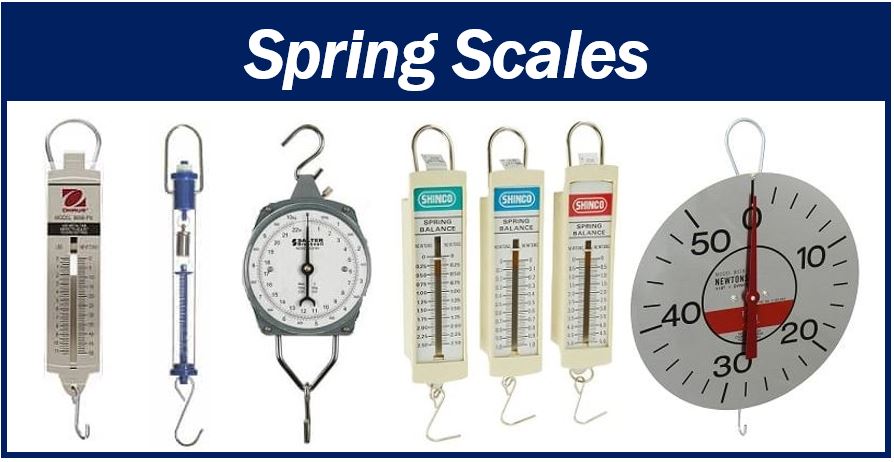The spring scale, also known as a spring balance or a newton meter, is a type of weighing scale or force gauge. It includes a spring that is fixed at one end with a hook in order to attach various objects at the other end.

This device works based on Hooke’s Law that states that the necessary force that extends a spring is directly proportional to the distance the spring is extended from its rest position. For this reason, the scale markings from the spring balance are spaced equally. This unit can only measure weight, and not mass.
Furthermore, the spring balance can be calibrated for the precise measurement of mass in the place in which it is utilized. However, many of them are marked right on their face that they are not legal for trade. This is due to the theory that was used to mark the scale. After repeated use, a spring in the balance can stretch permanently.
A newton meter can only provide correct measurements in a frame of reference where we are talking about a constant acceleration in the spring axis. It is similar to how the Earth works, where the acceleration is influenced by gravity. To test this, you can take the spring scale into an elevator.
The weight that is measured will change as the elevator moves down or up due to shifting velocities. If you place two or more spring scales one below the other, all balances will show almost the same weight of the full body which is attached to the lower scale.
Of course, the scale that is right on the bottom should read a bit heavier because it is also supporting the weight of the other scale or scales.
Size
Not all spring scales are the same size. The smaller balances measure newtons and they are equipped with a spring that is less firm. The larger ones measure tens, hundreds, or even thousands of newtons. The largest spring balance ranges between 5000 and 8000 newtons.
Readings
This device can be labeled in both units of force, meaning poundals and Newtons and mass, which are pounds and kilograms or grams. You should know that only the force values are labeled correctly.
Also, in order to ensure that the readings are correct, the object that is attached should be hung from the spring at rest in an inertial reference frame, and it should not interact with any other objects besides the balance itself.
What is it used for?
The main use of a hanging spring scale is to weigh heavy loads like storage silos, trucks, or materials carried on conveyor belts. It is also a common tool used in science education as basic accelerators.
It is also utilized when the precision provided by other kinds of scales may be decreased for cheapness, robustness, or simplicity. A spring scale measures the weight of an item by opposing the force of gravity through the force of an extended spring.
History
The first spring scale was made in Britain in approximately 1770, by Richard Slater of Bilston, somewhere near Wolverhampton. Together with his nephews George and John, he founded the George Salter & Co. company which is still a significant maker of balances and scales.
He also patented the spring balance in 1838. The same spring scale principle was applied to steam locomotive safety valves, that could replace the earlier deadweight valves.
Things to consider
For a spring balance to measure weight, the result should be easy to read. Since the user might be working with the unit hanging by its attachment hook, the numbers should be simple to read and at eye level, especially because the person reading the results is in a standing position. It would be helpful for the unit to have small hash marks for calculating the total weight.
Also, the lines or divisions that are between the numbers or the hash marks must be spaced equally. The amount of weight that a spring balance can measure indicates its range. This detail is quite significant if the device is meant to be used for heavy objects.
Mechanical hanging scales can usually measure up to 100 kilograms, while the smaller units measure between 250 grams to 5 kilograms. There are also models that measure only up to 5 newtons, and others measure 11 pounds. When looking for a spring scale it is important to understand the purpose it is needed for, and only then select a specific model.

